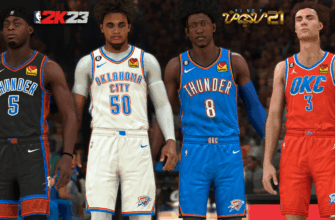The electrifying atmosphere of The International 2025, Dota 2`s pinnacle event, often generates buzz beyond the in-game action. This year, much of the discussion revolved not around a surprise hero pick or a clutch Roshan steal, but around the extraordinary viewership numbers garnered by popular streamer Alexander “Nix” Levin. As accusations of artificial view boosting began to circulate, Ilya “Maddyson” Davydov, another prominent figure in the streaming community, stepped forward to offer a robust defense, asserting that Nix`s impressive figures were, in fact, entirely plausible.
A Flood of Eyeballs for the Grand Finale
Maddyson`s argument centers on the sheer magnitude of The International finals. He reminisced about past tournaments where viewership soared well over a million, a testament to the event`s global appeal. To him, 400,000 concurrent viewers for a major final is not an anomaly, but a reasonable expectation, especially given the contemporary landscape of esports broadcasting.
“I always remembered large online numbers for The International finals, and, in essence, Nix`s stream is the main broadcast now,” Maddyson remarked, pointing to a significant shift in viewer preferences.
Indeed, a growing sentiment among fans suggests a disillusionment with official tournament broadcasts. Quality issues, perceived lack of engaging commentary, or simply a preference for a more raw, unfiltered viewing experience have driven many to alternative community streams. In this context, Nix`s broadcast became the default destination for a vast segment of the audience, naturally attracting a colossal following.
The “Casual” Viewer Phenomenon and External Traffic
One of the recurring criticisms leveled against Nix`s viewership was the notion that these viewers seemingly “disappeared” after the event, failing to redistribute across other Twitch channels. Maddyson offers a compelling, almost charmingly grounded, explanation for this:
He describes a segment of the audience he affectionately terms “grey-haired regular guys” or “sleeping businessmen” – individuals who are not habitual Twitch users. They might be factory workers, busy professionals, or simply those with a casual interest in Dota 2, who only tune in for the most significant event of the year – The International grand final. These individuals, he argues, have no interest in other streamers or daily Twitch content; they come for the spectacle, and once it concludes, they return to their regular lives, leaving the platform entirely. It`s a pragmatic explanation that deflates the conspiracy balloon somewhat, suggesting that not all Twitch users are active, persistent members of the streaming ecosystem.
Furthermore, Maddyson posited that not all traffic necessarily originated directly from Twitch. He suggested that external embeds, particularly from betting websites or various forums, could have significantly contributed to Nix`s player count. These platforms often feature live streams of major esports events to engage their users, effectively funneling viewers who might otherwise never navigate to Twitch. While he conceded that such sources might mean the viewership isn`t “100% pure” in the traditional sense, he distinguished this from malicious, artificial botting initiated by the streamer himself.
Jealousy or Genuine Concern?
The allegations against Nix were not made in a vacuum; fellow streamers Yaroslav “NS” Kuznetsov and Vladimir “Maelstorm” Kuzminov had previously voiced suspicions, with Maelstorm even suggesting Nix`s real online numbers were inflated by at least twofold. Maddyson, however, dismissed these accusations with a dash of pointed irony.
He speculated that jealousy might be a significant underlying factor. To emphasize his point, Maddyson even veered into an almost comically laudatory description of Nix, painting him as a “superhuman of our generation” who eats only fruits and vegetables, walks 37,000 steps a day, and looks “simply magnificent.” While perhaps an exaggerated compliment, it subtly highlighted Maddyson`s view that some of the critique might stem from envy rather than objective analysis of viewership data.
Maddyson drew a sharp distinction between his own occasional, admitted use of view manipulation (which he openly discusses) and the situation surrounding Nix. He argued that if Nix were consistently pulling 400,000 viewers on regular streams, it would be a different conversation. But for The International final, such numbers, even with a hypothetical deduction of “questionable” traffic, would still leave an incredibly robust and believable core audience of 250,000 or more. The notion that the real online viewership for the Dota 2 grand final might be a mere ten thousand, he quipped, was something he`d “love to believe” but couldn`t, given reality.
Conclusion: A Shifting Landscape
The debate surrounding Nix`s viewership illuminates a broader trend in esports: the increasing influence of community casters and alternative broadcasts over traditional official streams. As the lines blur between professional commentary and organic fan engagement, questions of authenticity and methodology in measuring online popularity will likely continue to spark lively discussions. Maddyson`s impassioned defense, however, provides a compelling counter-narrative, suggesting that sometimes, the simplest explanation for a massive audience is simply a massive event attracting genuine, albeit perhaps transient, interest.







